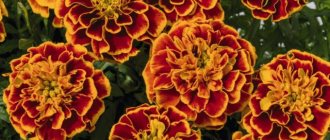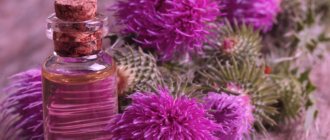Folk remedies from calamus root
Calamus is a powerful nootropic herb that affects higher mental functions.
Nootropics stimulate mental activity, activate cognitive functions, improve memory and increase learning ability.
It has been known as a medicinal plant since ancient times, especially in China and India.
It is an important ingredient in most Ayurvedic medicines.
In the 16th century, German pharmacists sold several hundredweight of this root.
- Bitter essential oil and acorine increase appetite. It increases the secretion of gastric juice, improves digestion, and reduces stomach pain.
- Widely used in herbal medicine as an aromatic stimulant and mild tonic.
- Highly valued as a brain and nervous system rejuvenator and as a remedy for digestive disorders in Ayurveda.
- In small doses it reduces gastric acidity, while large doses increase gastric secretions, which is why it is recommended in the treatment of anorexia nervosa.
- Chewing the root relieves toothache.
- Activates the speech center of the brain. It is useful in treating speech disorders.
- Very effective for mental disorders.
- Used to treat schizophrenia, anxiety, depression and epilepsy. It also improves memory and learning processes.
- Used to treat throat conditions including sore throat, hoarseness, sore throat and related symptoms.
- It improves the pitch and quality of the voice.
- Used as an expectorant. Calamus liquefies phlegm and expels it from your body. Treats whooping cough, especially in children.
- Used in the treatment of various types of cancer such as lung cancer, breast cancer and liver cancer.
Used in the form of infusions, tinctures and powders.
- stomach diseases
- colitis
- hepatitis
- cholecystitis
- tonic for central nervous system depression
- kidney disease
- liver disease
- bladder diseases
- peptic ulcer of the stomach and duodenum
- bad breath
- inflammation of the mouth and gums
- inflammation of the larynx
- angina
- chronic tonsillitis
- stomatitis
- diarrhea
- rheumatism
- gout
- joint pain
- hypothyroidism
- arthritis
- swelling
- obesity
- asthma
- mouth ulcers
- syphilis
Digestive system
Calamus instantly relieves stomach problems. It cleanses the stomach and also relieves headaches caused by poor digestion. It relieves flatulence and colic, increases appetite. Used to treat anorexia, gastritis and stomach ulcers.
Anti-smoking
Chewing calamus root may cause you to dislike the taste of tobacco. Thus, those who are addicted to smoking can quit this habit by using this root. In addition, chewing or smoking tobacco often causes bad breath. Chewing the root can also help eliminate tobacco odor.
Oral diseases
Treats mouth ulcers and eliminates bad odor. Ayurveda uses the root as a pain reliever for toothache.
Treats insomnia
The aroma of calamus root is calming and can be used to treat insomnia. This calming effect can help relax your body and your mind.
Cough and fever
Along with a decoction of licorice root, it has a positive effect on cough, fever and colic in children. For a dry cough, chew calamus root for several minutes.
Skin diseases
Calamus root paste can be used externally for diseases such as eczema, ringworm and scabies. In the Siddha system it is used as a disinfectant for vaginal infections and foul-smelling discharges, mainly after childbirth.
Prevents infections
Calamus root is also capable of preventing infections, both internal and external. Due to its toxic substance, calamus root is used as a natural antibiotic.
For epilepsy
In the Siddha system, calamus is used with equal portions of asafoetida, haritaki, black salt, dry ginger, long pepper and black pepper to treat epilepsy and mental disorders.
- The rhizome powder is drunk with warm milk for sore throat.
- Preparations made from the rhizome are used to stimulate the flow of urine, relieve constipation and cleanse the body of impurities.
- Stewed rhizome is given for fever, cough and poisoning.
- A mixture of rhizome powder with dried ginger powder and honey is taken for partial paralysis of the mouth, chin and cheeks.
- A mixture of rhizomes and cashew oil is used to relieve swollen joints and sore muscles.
- For this, rubbing is used.
- A mixture of rhizome powder and honey is taken as a cure for epilepsy and to treat loss of sanity.
1 tsp crushed roots, pour 2 cups of boiling water, boil for 15 minutes. Drink ½ glass 3 times a day before meals.
For the treatment of jaundice
1 tsp crushed roots, pour 1 cup of boiling water, leave for 20 minutes. Strain. Drink ½ glass 4 times a day.
1 tsp Pour 1.5 cups of boiling water over the crushed roots and leave for 2 hours. Strain. Rinse your mouth with warm infusion.
1 tbsp. Pour 1 cup of boiling water over the crushed roots and leave for 30 minutes. Strain. Rinse your mouth.
1 tbsp. Add crushed roots to 1 glass of cold water and leave for 5 hours. After this, boil for 20 minutes. Strain. Rinse your mouth.
1 tbsp. Pour 1 cup of boiling water over the crushed roots and leave for 20 minutes. Strain. Take ½ glass 4 times a day 30 minutes before meals.
For diarrhea
Take ½ calamus roots and ½ oak bark. 1 tbsp. collection, pour 1 cup of boiling water. Leave in a thermos overnight. Strain. Drink ¼ glass 3-4 times a day before meals.
Grind the roots into powder. The daily dose of powder is 5 g. Take before meals.
2 tbsp. pour 1 cup of boiling water over the roots. Boil for 20 minutes. Leave for 30 minutes. Strain. Take the bath at night for 10-12 days. Water temperature 35-36 degrees.
For cholecystitis
1 tsp. Pour 1 cup of boiling water over the crushed roots and leave for 20 minutes. Strain. Drink 1/2 glass 4 times a day.
1 tsp. pour 1 cup of boiling water over the roots and leave for 20 minutes. Strain. Drink 1/2 glass 4 times a day 30 minutes before meals.
For heartburn
Grind the roots into powder. Take 3-4 times a day, on the tip of a knife. Course 2-3 weeks.
1 tbsp. l. roots, pour ½ cup boiling water. Leave for 2 hours. Strain. Take according to
1 tbsp. spoon, 3 times a day, 30 minutes before meals.
For diathesis
Take baths. Pour 300 g of rhizome into 3 liters of water. Boil over low heat for 20–30 minutes. Strain and pour into the bath.
Take baths. 2 tbsp. l. roots, pour 1 liter of boiling water, boil for 20 minutes, leave for 30 minutes. Strain. The course of treatment is 10–12 baths. Water temperature 35-36 degrees.
For various wounds
Grind the calamus roots into powder and sprinkle it on the wounds.
1 tsp. pour 1 cup of boiling water over the roots and leave for 20 minutes. Strain. Drink ½ glass 4 times a day 30 minutes before meals.
For hair loss
1 tbsp. l. pour 1 cup of boiling water over the roots and leave for 30 minutes. Rub into hair roots.
For dandruff
2 tbsp. spoons of roots pour 1 liter of water, boil for 15 minutes. Strain. Make masks from the decoction: rub the decoction into the roots and leave for 20 minutes. There is no need to rinse the decoction from your hair.
For oily hair
2 tbsp. spoons of roots pour 1/2 liter of boiling water, boil for 2-3 minutes over low heat, cool, strain. Add a tablespoon of vinegar or the juice of 1 lemon, 40 ml of calendula alcohol tincture. Rub into hair roots.
2 tbsp. spoons of roots, 2 tbsp. burdock roots pour 1.5 liters of water, boil for 20 minutes. Leave for 6 hours. Rub the decoction into the scalp.
For the flu
Chew the roots.
You can make compote from both fresh and dried apples. Fresh apples 300 g (if dry, take 3 times less), pour 1 liter of water and cook until tender. Then add 2 tbsp. dry roots of calamus, if the roots are fresh, you will need 1 cup. Boil. After this, leave for 5-10 minutes. The compote is ready, you can sweeten it if desired. Preferably with honey, when the compote has already cooled down and its temperature does not exceed 40-50 degrees.
Calamus rhizomes 1 part, cinnamon bark 1 part, trifoliate leaf 1 part, orange peel 2 parts, centaury herb 2 parts, wormwood herb 2 parts. 1 tsp collection, pour 1 cup of boiling water. Cool. Strain. Drink 1/4 cup 4 times a day, before meals.
Since ancient times, calamus has been used as a spice, which was on par with bay leaves.
The rhizome can be candied and eaten as a delicacy.
- confectionery
- added to compotes
- used instead of bay leaf
- substitute for ginger, cinnamon, nutmeg
- The leaves are used to make baskets.
- Used as thatch for roofs.
- The essential oil from the rhizome is used in perfumery and as a food flavoring.
- Effective against flies.
- Used for storing rice, it greatly reduces losses caused by insect damage because the oil at the root sterilizes male rice weevils.
- All parts of the plant can be dried and used to repel insects or to scent cabinets.
- Can be used as incense.
- The growing plant repels mosquitoes.
- Used as a pond plant in gardening.
- Calamus root is cut into disc-shaped beads and made into bracelets, which are usually worn by newborns for the first few months.
- Used in toothpastes.
Calamus is famous for its healing and effective properties. The root has a moderate hemostatic effect, antibacterial, antispasmodic and sedative effect. To combat smoking, use a decoction or infusion of calamus root.
Previously, the root was used to purify water from parasites and microbes. Together with charcoal, calamus root created a good antibacterial effect. The essential oil contains tannins. When used in moderation, Tartarian grass increases appetite. If you regularly rinse your mouth with an infusion of the rhizome, it has a positive effect on strengthening the gums.
If you want to light a cigarette, you can chew a small piece of fresh or dried calamus. The composition contains active substances that, when chewing calamus root, enter the mucous membrane and cause an aversion to smoking. To completely quit smoking, you need to chew a piece of the root for 2 weeks. Unlike chemical drugs for smoking, which act on the brain, calamus is considered a natural product and has no effect on the brain.
Healthy recipes
There are many recipes made from calamus root. I will give just a few of them.
● For gastritis, colitis, stomach and intestinal colic. 1 hour Pour a spoonful of chopped rhizome into a glass of boiling water, leave for 20 minutes, strain. Drink 1/2 glass 4 times a day for 30 minutes. before meals, sweeten slightly. ● Candied calamus roots help with angitis and pharyngitis (they need to be chewed). In order to prepare a medicinal delicacy, first boil the syrup, as for jam, and then dip 3–4 cm long pieces of calamus root into it, boil for 4–5 minutes, and leave for 10 hours. Bring to a boil again, then allow the syrup to drain and dry like candied fruit. ● For stomatitis and periodontal disease, prepare a mixture of equal parts of calamus rhizomes and oak bark. 2 tbsp. spoons of the mixture are poured into 1 liter of hot water, boiled for 15 minutes, filtered, cooled and used as a rinse.
How to harvest calamus roots
After which they should be washed off the ground, all excess removed from the roots and cut into pieces of 20-30 cm.
The roots are first air-dried, then the roots are dried in a well-ventilated area.
When artificially drying, the temperature should not exceed 25-30 degrees; if this rule is neglected, the roots will become unusable, because at elevated temperatures the essential oil evaporates.
Medicinal properties
- improved digestion
- stimulates appetite
Folk remedies from calamus root
Calamus is a plant with Indian roots. Today this medicine is called “Tatar herb”, “Tatar potion”, etc. Such names were not obtained by chance, since Tatar nomads contributed to the wide spread of the plant. They used calamus to disinfect water during their campaigns.
Today, “Tatar grass” is actively used in folk medicine. Positive feedback has been received as the plant has a wide range of actions:
- tonic;
- vasodilator;
- antispasmodic;
- hemostatic, etc.
The medicinal properties of the rhizome have been studied for many years. Today, many doctors prescribe natural remedies instead of well-advertised pharmaceutical drugs. Its anti-smoking effect ensures an effective fight against toxins and pathogenic flora.
Medical experts suggest options for using the rhizome to help get rid of tobacco addiction.
The most effective way is considered to be chewing dried calamus root before smoking, since mixing the herbal remedy and tobacco causes a gag reflex in the smoker.
The most effective way to stop smoking is chewing dried calamus root.
When using this method for 2 weeks, an addicted person develops an aversion to tobacco at the subconscious level, which results in quitting smoking.
An equally popular remedy is a tincture of ginger and calamus root against smoking. Grated ginger and calamus roots are mixed with lemon juice and diluted with hot water. Honey is added to the resulting mixture for taste and drunk 3 times a day for a week.
Tatarian herb in folk medicine
Calamus is a plant with Indian roots. Today this medicine is called “Tatar herb”, “Tatar potion”, etc. Such names were not obtained by chance, since Tatar nomads contributed to the wide spread of the plant. They used calamus to disinfect water during their campaigns.
Today, “Tatar grass” is actively used in folk medicine. Positive feedback has been received as the plant has a wide range of actions:
- tonic;
- vasodilator;
- antispasmodic;
- hemostatic, etc.
The medicinal properties of the rhizome have been studied for many years. Today, many doctors prescribe natural remedies instead of well-advertised pharmaceutical drugs. Its anti-smoking effect ensures an effective fight against toxins and pathogenic flora.
Calamus contraindications
Pregnancy
Avoid using this herb if you are pregnant or nursing a baby.
Causes cancer
Beta-isoasarone present in calamus may cause cancer. However, the presence of this chemical varies depending on the variety of grass.
For heart diseases
This herb should not be taken in large quantities if a person is suffering from any heart disease. Helps lower blood pressure and may also lower your heart rate, which can be fatal. People suffering from low blood pressure should avoid this plant completely.
Before or after surgery
Acts on the central nervous system and makes you sleepy. It is best to avoid this herb 2 weeks before and 2 weeks after surgery.
Medications for depression
Do not take this herb with medications for depression. Most depression medications are not suitable for this.
Sedatives
Do not take calamus if you are taking any medications that cause drowsiness. This herb causes drowsiness, and taking it with other medications that also have similar effects may not be very beneficial.
Stomach acidity
If you have problems with stomach acidity, then it is best to avoid this herb.
- Pregnant and lactating women should not use Tartarian grass. Especially in the first trimester, calamus can cause nausea, and pregnant women often experience toxicosis even without this.
- People with low blood pressure should not use decoctions of calamus.
- People with high stomach acidity should not use Tatar grass.
Healing rhizome of calamus
The rhizome of marsh calamus (tartar) has been known for its medicinal properties since ancient times. Ancient Slavic sources describe numerous cases of healing with the help of Tatar grass: cases of relief from cholera, fever, skin infections, colds and intestinal diseases are known.
Calamus root is widely used in folk medicine
Modern medicine is discovering new healing possibilities of calamus, used in various fields.
The rhizome of the plant has antispasmodic, anesthetic, antimicrobial, sedative, hemostatic and tonic properties.
The range of ailments that calamus root can help treat has expanded significantly:
- Gastrointestinal diseases: enteritis, ulcers, gastritis;
- respiratory tract diseases: sore throat, ARVI, influenza, bronchitis;
- blood and vascular diseases: hypertension, varicose veins;
- diseases of the nervous system: stress, depression;
- dermatological diseases: ulcers, acne, purulent inflammation.
The medicinal power of Tatar herb is due to the high content of essential oil, which consists of active biocomponents, vitamins, acids and resins.
Many people use calamus root to stop smoking; reviews from numerous patients confirm the effectiveness of this method.
Root with mint
But the most effective decoction that helps you give up this bad habit is a tincture of calamus and peppermint.
To prepare a healing infusion, use 2 teaspoons of peppermint and 1 teaspoon of calamus.
It is necessary to mix the crushed ingredients and pour 200 ml of boiling water into the mixture. You need to infuse the solution for an hour and then strain.
The infusion is not used for oral administration, but for rinsing the mouth if you want to smoke a cigarette.
How does calamus root help fight smoking?
Today, there are several options for using the root of a medicinal plant to combat a bad habit.
Calamus root medicinal properties and contraindications. The use of calamus root in folk medicine
In folk recipes, they most often suggest chewing a small piece of calamus root (you can use either fresh or dried) and swallowing the saliva. This should be done in cases where there is a strong desire to pick up a cigarette. Unlike most chemical drugs for quitting a bad habit, calamus does not affect the brain. Calamus root releases active substances that are quickly absorbed by the mucous membrane, causing disgust at the mere thought of smoking.
This method helps reduce cravings for tobacco and relieves the discomfort associated with quitting nicotine. A cigarette lit after calamus root will cause a gag reflex. It is believed that to completely free yourself from addiction, you need to use this method for at least 10-14 days.
Another option to use calamus for smoking is to combine it with peppermint.
For the infusion you will need:
Infusion with calamus from smoking
- 2 tablespoons (teaspoons) peppermint;
- 1 teaspoon (teaspoon) chopped calamus root.
Mix all ingredients, add 200 ml. boiling water (glass), leave in a mug or thermos for an hour, strain. Rinse your mouth with the resulting infusion if you have a strong desire to smoke.
Based on this recipe, tablets are produced whose action is based on an aversion to tobacco and tobacco smoke.
Benefits of calamus root for smokers
In the past, calamus rhizome was used to purify water, because it effectively fights harmful substances and parasites that are in the water.
This same property of calamus is what makes it so valuable in the fight against smoking. The substances contained in calamus bind and remove harmful substances that are found in excess in the smoker’s body. Half of all pharmacological anti-smoking products are made from calamus, so using this plant, the effect will be even greater than that of anti-smoking tablets from the pharmacy.
In addition, tartar can improve digestion and prevent gastritis and ulcers that smoking can cause.
You need to use calamus carefully, because its active ingredients are quite strong and, as a result, can cause a number of side effects. Pregnant women are strictly prohibited from consuming this plant.
If you smoke after consuming tartar tincture, a person will immediately feel terrible nausea, and in the first trimester of pregnancy it can lead to a miscarriage.
How to quit smoking
Unfortunately, not all smokers are puzzled by the question of how to quit smoking. But this is the first step to overcoming your addiction. The tragedy is that most people do not consider addiction to nicotine a problem, and do not want to give it up. Others want to find an easy way to quit smoking, but when they don’t find it, they become disappointed and return to cigarettes. In fact, today many tools have been developed that help defeat smoking. Nicotine patches, chewing gum, electronic cigarettes, special cigarettes containing herbs instead of tobacco - all this was invented to make the task easier for a person deciding how to quit smoking. Why is it that so little of this actually helps? Smoking, like other addictions, mostly lies in the field of psychology rather than physiology. That is, a person’s need is no longer for nicotine, but for the smoking process itself. Many people miss the usual actions associated with the smoking process. Think about why you smoke? Perhaps this is a way for you to take your mind off work, or does the process of smoking calm you down? A lot has been written and said about how to quit smoking, but the truth is that everyone who quits nicotine has their own story. There is no universal way out of this situation, and there cannot be, because each smoker has his own hidden reasons for smoking. If someone promises you an easy way to quit smoking, it is most likely a lie, because this requires deep introspection and willpower.
Making the decision to quit nicotine is already half the battle. You need to find a reason for yourself why you no longer want to smoke. For some it is the addition of a child to the family, for others it is saving money, for others it is maintaining health. By analyzing what smoking gives you and what it takes away, you can understand how much this habit spoils the quality of your life. And in a sense, such an analysis is the most realistic and easiest way to quit smoking. A positive attitude is also necessary. Many people make the mistake of telling themselves in advance: “I won’t be able to do this, I won’t be able to.” Program yourself for success, find yourself an interesting activity, a hobby that will captivate you. The main tool for fighting smoking is your brain.











